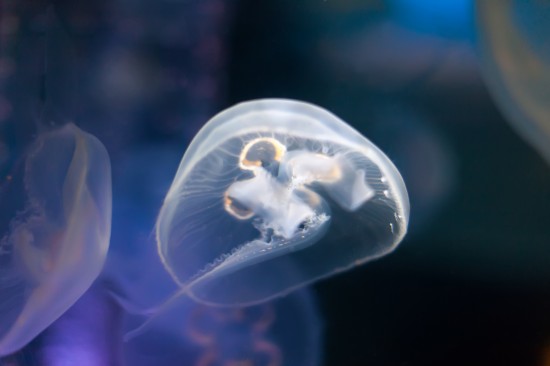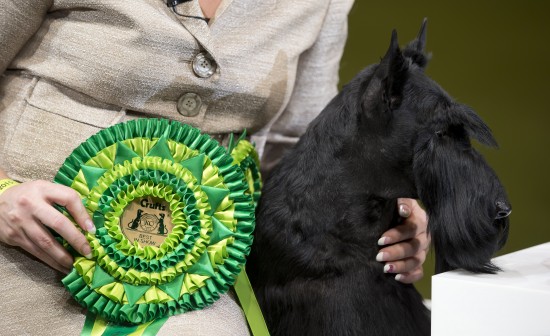A moment will come when an aquarium enthusiast will want to diversify the animal fauna in their tank to include species outside of fish. Freshwater aquarium shrimp are good choices in this regard. They add wonderful diversity to an aquarium and also serve as efficient cleaners by eating algae and scavenging leftover food from the substrate. Most species of shrimp suitable for home aquariums will range in size from ?inch to 3-inches when fully grown.
Introducing shrimp into an established aquarium requires a basic process to be followed in order to avoid acclimation problems for the shrimp themselves as well as the existing fish and plants currently present in your aquarium. Always take into consideration the fish species that inhabit your tank. Guppies, tetras and killifish are the most compatible with shrimp, but a good rule of thumb is to only keep shrimp with fish whose mouths are less than one-half in size in relation to the body of the fully grown shrimp. If upon introducing shrimp into your tank you notice strong aggression coming from a particular fish, monitor the situation closely. If the aggression does not stop the shrimp will have to be relocated.
Another part of the process for introducing freshwater aquarium shrimp is determining the number of shrimp to have in a tank. Shrimp are by nature territorial. If you have too many shrimp in an aquarium it can create aggression between the shrimp. In aquariums with a ten-gallon capacity and higher you could have one smaller species of shrimp per one gallon of water. Small species are those one-inch or smaller when fully grown. With larger species you should allocate as much as three gallons per shrimp to avoid territorial aggressiveness.
Having a suitable environment present in the aquarium prior to introducing the shrimp is also important. To achieve this, make certain that your aquarium set up includes stem plants from which shrimp can cling from. Also, have low lying foliage available to provide the shrimp with places to hide.
What do I feed my shrimp?
Freshwater aquarium shrimp are omnivores, meaning that they will eat plant and animal tissue. The most common species sold for aquariums are plant friendly. These shrimp will eat algae growth from the sides of the tank and will scavenge for food that has fallen on the substrate. If you notice that your shrimp start nibbling at your live plants simply add a little more food flakes than usual when feeding your fish. This will allow more of the flakes to fall to where the shrimp can consume them. If this were to be necessary, however, do it in small gradual increments. You do not want to end up with overfed fish or more food than even your shrimp can eat on the substrate, resulting in water contamination.
Caring for the shrimp
Shrimp are quite self-sufficient in a well-balanced aquarium. Their care is primarily centered on what to avoid, as opposed to an active regimen. Never use any sort of water additive, fish medicine, or any other supplement of any kind which contains copper. Copper is deadly to shrimp. In the wild, shrimp reproduce rapidly. In a multi-species aquarium, however, you will not have the problem of a population explosion in that most shrimp larvae will be eaten by the fish inhabitants and will never reach maturity. In terms of water condition, the same weekly monitoring that you perform for the aquarium overall will also cover the needs of the shrimp as they are equally sensitive to rises in ammonia, nitrites and nitrates, just as fish. If anything, you may even detect lowered levels of these compounds due to their own scavenging and algae eating efforts.
As long as one adheres to this basic process in selecting, feeding and caring for freshwater aquarium shrimp, they will make a practical and beautiful addition to your aquarium.

 When Your Gerbil is Missing
“Age does not protect you from love, but love to some
When Your Gerbil is Missing
“Age does not protect you from love, but love to some
 Can You Keep Jellyfish In Your Aquarium?
Can You Keep Jell
Can You Keep Jellyfish In Your Aquarium?
Can You Keep Jell
 Benefits of Buying a Puppy from a Pet Store
Benefits of Buying a Puppy from a Pet Store
If
Benefits of Buying a Puppy from a Pet Store
Benefits of Buying a Puppy from a Pet Store
If
 A Veterinary Nurse Shares Five False Economies When It Comes To Dog Ownership
A Veterinary Nurs
A Veterinary Nurse Shares Five False Economies When It Comes To Dog Ownership
A Veterinary Nurs
 Crufts 2015 - The Good Parts
Crufts 2015 - The
Crufts 2015 - The Good Parts
Crufts 2015 - The